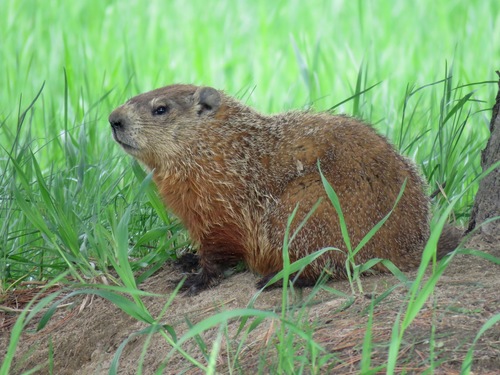
Groundhog
Meet Marmota monax, the burrowing expert! This groundhog, with its stout body and earthy brown coat, thrives in North America's fields and forests. Known for its seasonal hibernation, it plays a crucial ecological role by aerating the soil and promoting new plant life.
4-6 years
Lifespan
4.54 - 5.9 kg
Weight
Length: 61 cm; Height: 30 - 61 cm
Size
Brown, Grey
Color
2 years
Age of Sexual Maturity
6 weeks
Age of Weaning
10 mph
Top Speed
Least Concern
Conservation Status
Stable
Population Trend
Distribution Range of the Groundhog
Marmota monax, commonly known as the groundhog or woodchuck, is native to North America. Its geographical distribution includes the northeastern and central United States, most of Canada, and parts of Alaska. It is notably absent from the southeastern and far western parts of the United States.
Groundhog's Habitat
Environmental Conditions
Groundhogs are primarily found in deciduous woodland areas, open meadows, and even along forest edges. The typical environmental conditions include temperate climates with significant seasonal variations, ranging from cold winters to warm summers.
Ecological Niche
Groundhogs are burrowing rodents that play a crucial role in their ecosystem. They are herbivores, feeding primarily on grasses, clover, and other vegetation, which helps in seed dispersal. Their burrowing activities aerate the soil, contributing to soil health and providing habitats for other species. Groundhogs also influence predator-prey dynamics, serving as prey for larger carnivores.
Copyright @ Nature Style Limited. All Rights Reserved.
 English
English